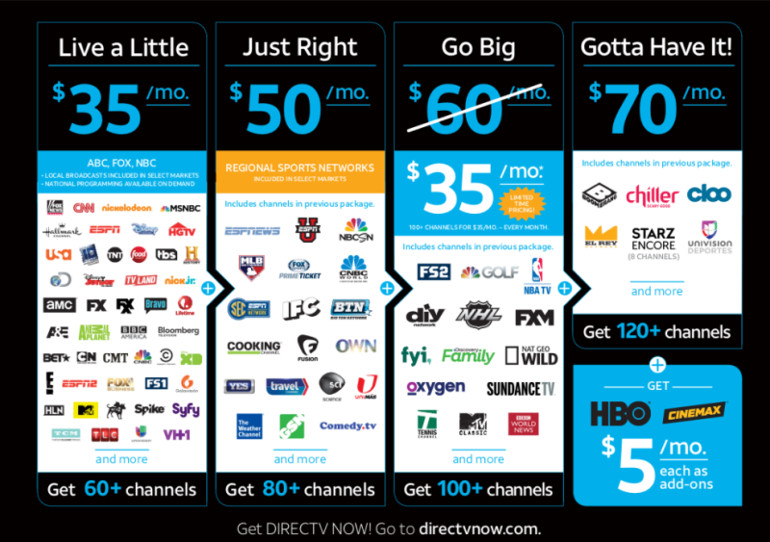TV apps are breaking down into a confusing mess


DirecTV Now reestablishes the channel paradigm in a system built for apps
Graduations are often accompanied by proclamations. Such was the case for Apple TV when Apple's former hobby became a full-fledged OS vessel as Tim Cook proclaimed, "the future of TV is apps."
The prediction invited skepticism for many reasons.
A year earlier, Google had made its own run at app TV with Android TV, which has largely fallen flat with the exception of Sony's integrated sets. Indeed, a host of boxes and smart TV interfaces through the years has only reinforced that the television experience is about video. Of course, many such apps have appeared for Apple TV, but they aren't much different than the "channels" that populate Roku or previous Apple TVs.
As time goes on, it seems as though the app paradigm -- at least one in which one app corresponds to one traditional "channel" -- is breaking down. This has actually been true for some time when it comes to "TV everywhere" options from cable providers such as TimeWarner Cable (now rebranding to Spectrum). But access to these apps were gated by subscription.
Understanding the challenges of navigating around a sea of rectangular tiles, each of which can reveal countless hours of television programming, Apple announced "TV," the one Apple TV app to rule them all. The app itself merely provided a visual interface to the kind of cross-app navigation Apple brought to its little black box with Siri.
But it seemed to cross a line with Netflix, which has opted out of having its catalog accessible via TV. On one hand, Netflix' exclusive content would seem to protect it from being one of many commoditized options for finding content. On the other hand, the company has become far more concerned with the presentation of its content in recent years, going so far as to certify televisions for optimal picture compliance.
Apple launches unified TV app, aims to make Apple TV your new set-top box across the small screen | FCC doesn't like AT&T, Verizon 'zero rating' their own video apps | AT&T DirecTV Now: The good, the bad, and the ugly
And this week brought the announcement of DirecTV Now, the linearly programmed streaming service that AT&T coyly aims at those millennial "cord-nevers", but which represents one of the most complete shots across the bow of cable providers. DirecTV Now will not only be available on Apple TV, but AT&T is offering the device free with a three-month pre-paid subscription. (Even in the broadband TV era, carriers have a hard time getting out of the device distribution role.)
The future of TV may indeed be apps, but not in the sense that we've come to understand them in the context of the smartphone where there's a direct correlation between an app and its company's main service.
For long-tail players, they remain a simple channel-like conveyance for now. But with aggregators such as Amazon offering 30 add-on packages for niche content such as the comedy channel Seeso, these may eventually become part of the package just like cable channels.
For content providers and aggregators late to the broadband party, they provide a point of distribution via app stores and via service entry via the user interface. But once users are in a DirecTV Now, navigation of video content falls to how the aggregator wants it, not to the app.
If these come to dominate broadband TV, the idea of a separate app for an NBC makes about as much sense as putting an over-the-air antenna on your roof when you already have a cable subscription. They may morph into more weblike branding and sampling experiences with supplemental content than a main interface to the video content consumers really want.